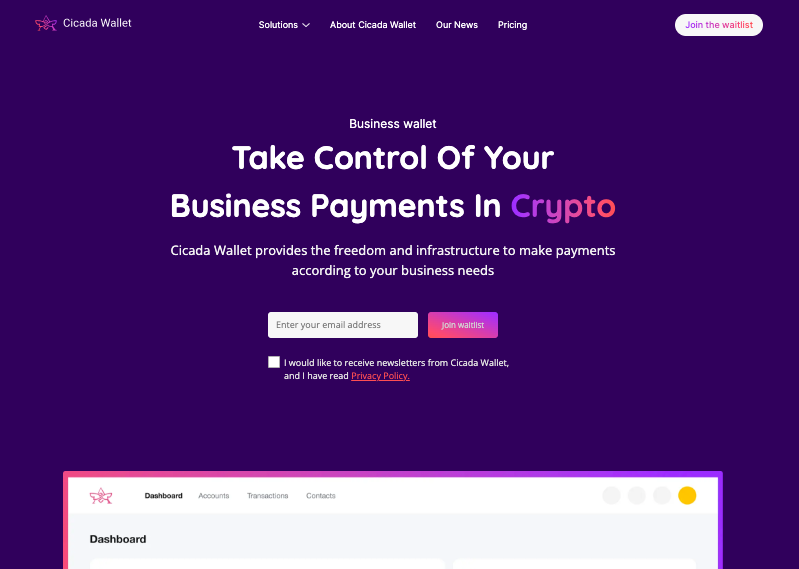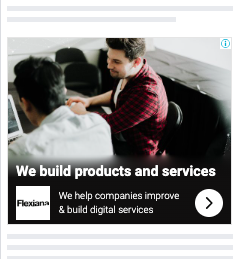Picture this: You’ve come up with a genius concept that you’re convinced will revolutionize the market. But before you invest all your time, energy, and resources, it’s crucial to validate whether there’s a demand for your offering. That’s where idea validation comes into play! Kind of like a proactive reality check, but the positive kind. Paid Advertising is a powerful tool to use for this purpose, now let’s dive into when you should use what type of advertising.
What are Paid Ads?
You’ve heard the terms Paid Advertising, SEM, PPC. But what is what?

Search Engine Marketing (SEM)
SEM stands for Search Engine Marketing. It is a digital marketing strategy that involves promoting websites by increasing their visibility in search engine results.
While SEO is about optimising content in order for your website to “organically” end up high in the search results, SEM is about the paid ads. It allows you to quickly surpass the organic results and show your ad among the first results. The name of the advertising model commonly used is called PPC.
Pay-Per-Click (PPC)
PPC is short for Pay-Per-Click and it’s an online advertising model. The beauty of this model is that advertisers only pay when a user clicks on their ad. So if your ad is visible at the top of the search results, and nobody clicks, you don’t pay! In a nutshell, you’re essentially buying visits to your website or landing page rather than paying for ad impressions or views.
PPC Platforms
Although there’s plenty of PPC-platforms, the main include:
- Google Ads:
Google Ads is the most popular and widely used PPC platform. It allows advertisers to create and display ads on the Google search engine and its partner websites, such as YouTube and Google Display Network. With Google Ads, advertisers can target specific keywords, demographics, locations, and interests to reach their desired audience.
- Microsoft Advertising (formerly Bing Ads)
Microsoft Advertising is the PPC platform for Microsoft’s search engine, Bing. It offers a similar advertising model to Google Ads, allowing advertisers to create search ads that appear on the Bing search engine and its network of partner sites.
- Meta
Meta is a PPC platform that enables advertisers to create and display ads on the Facebook platform, including Facebook News Feed, Instagram, Messenger, and Audience Network. Advertisers can target specific demographics, interests, behavior, and locations to reach their target audience.
- Twitter Ads
Twitter Ads is a PPC platform that allows advertisers to create and promote ads on the Twitter platform. Advertisers can target specific keywords, demographics, interests, and locations to reach users as they engage with content on Twitter.
- LinkedIn Ads
LinkedIn Ads is a PPC platform designed specifically for professional networking. Advertisers can create and display ads on the LinkedIn platform to target professionals based on their job titles, industries, company sizes, and more.
- Amazon Advertising
Amazon Advertising is a PPC platform for businesses selling products on Amazon. It allows advertisers to promote their products with sponsored ads that appear in search results and on product detail pages.
How to use Paid Ads for Idea validation
The Waitlist Strategy
Your product might be far from ready, but you can still create a buzz around it and have interested people to sign up for a waitlist on your website. This waitlist can then be connected to your e-mail marketing tool, such as Mailchimp.
Now that you have your waitlist on your website, you need to promote it! This is where Paid Advertising comes in. Promoting your website through Paid Advertising will help you assess the interest in your product, estimate a rough cost per acquisition, and gather valuable information about how your product could be performing in the market. Finally, you should also contact the leads you get in your waitlist submissions and try to convert them once your product is ready. Check out this article to see how we did it in our product Frankie.

Why Paid Ads?
In order to promote your website or waitlist lead form, you can use different marketing channels. Paid Advertising is especially effective for quick results (which is what an idea validation should be all about!). It helps you push your product to relevant users and assess their interest in a matter of days, or even, hours.
Targeted Audience Reach
Paid advertising allows you to target specific demographics, interests, behavior, and locations. By reaching the right audience with your ad, you can quickly gauge their interest and response to your idea.
A/B Testing
Paid advertising platforms often offer A/B testing capabilities, allowing you to test different ad creatives, messaging, and calls-to-action. This experimentation helps you identify what resonates best with your audience and refines your idea accordingly.
Measurable Metrics
Paid advertising provides detailed performance metrics, such as click-through rates, conversion rates, and engagement data. These metrics help you measure the effectiveness of your idea and make data-driven decisions.
Cost Control
You can set your budget for paid advertising campaigns, ensuring that you don’t overspend during the validation phase. This cost control enables you to test your idea within a predetermined budget.
Scalability
Paid advertising can reach a wide audience quickly, making it suitable for testing ideas on a larger scale. You can expand or narrow your reach as needed to validate the idea with different audience segments.
Geographic Testing
If your idea is location-specific, paid advertising lets you target specific geographic areas to assess regional interest and demand.
Capture Interest and Leads
Paid advertising can drive potential customers to landing pages or lead capture forms. This allows you to collect contact information from interested parties and engage with them further, just like we did with our product Frankie.
Competition Analysis
Monitoring how your idea performs compared to competitors’ ads can provide valuable insights and help you refine your offering.
How long should you promote your waitlist for?
Even though you technically can get a significant amount of traffic from most advertising platforms in a matter of days (if your audience is large enough and you have the budget for it), I’d still recommend you to test for at least 3 weeks, which used to be the unofficial guidelines from Google. Each platform has got their own learning period, and you often see an enhancement in performance as you let your campaigns gather data and improve. You also get a chance to sharpen and optimize the campaign yourself while seeing the first results.
Remember to set up conversion tracking
Remember to set up conversion tracking on your join the waitlist-campaigns. You want to know what clicks on your paid ads actually joins your waitlist.
What are the different types of Paid Ads I can create?
While there’s many different types of categories of ads you see while browsing online, here are some of the more common ones.
Search Ads
Search Ads are text-based ads that appear on search engine results pages (SERPs). These ads are triggered by specific keywords that users enter in the search engine. When a user searches for a keyword that matches an advertiser’s chosen keywords, their ad may appear at the top or bottom of the search results. It’s usually either Google Ads or Microsoft Advertising where you’d create and manage these ads.
Display Ads
Display ads, also known as banner ads, are visual advertisements that appear on websites within a network of display advertising partners. Display Ads can include images, videos, interactive elements, and rich media formats. Display ads are shown to users while they browse websites, watch videos, or use mobile apps within the advertising network.
Display Ads are commonly managed in Google Ads, ad networks and programmatic platforms like Google Display Network, AppNexus, OpenX, and DoubleClick Bid Manager.

Product listing ads
Google Shopping Ads and Amazon Ads are examples of other type of online visual ad that specifically focuses on showcasing product listings. They are not ideal in most validation scenarios as you need to set up a real product feed to test them out.
Social Ads
While most of the display ads you see online are created in Google Ads and Google’s Display Network, the ads you see while browsing the biggest social media platforms such as Facebook, Instagram, Twitter, LinkedIn are managed in their respective platforms.
YouTube Ads
YouTube ads refer to advertisements that are displayed on the YouTube platform before, during, or after videos. YouTube offers several types of ads that advertisers can utilize to reach their target audience, for example, ads that are skippable, and ads that are non-skippable.
When to use Search Ads for Idea Validation
Scenario: Let’s use our Recruitment software Frankie as an example. It’s a quite straightforward product in a market with competition.
When there’s a clear search intent
There’s likely a clear intent behind a search for a recruitment software. Search intent is the specific goal or information that the user is seeking to fulfill with their search. If someone’s typing in things like “Recruitment software with automation” in Google, we can assume they might be in the market for just that, an affordable recruitment software with automation features.

When your idea is explainable in words
Search Ads enable precise keyword targeting, so they allow you to be as specific you want in selecting what search terms should trigger your ads. But again, if your product is too complex to specify in a query or people don’t know what it is until they see it, then these types of ads might not ideal for your validation experiment.
When people are actually searching for it
If there’s too few searches for the idea or the current alternative solutions then you might need to look at pushing products through other channels (too).
When there’s competition
If you’re playing in a saturated market, then bringing your product forward with paid search ads is the absolutely fastest way to get the attention of your target audience.
Competition is not always bad. You can use the competition to your advantage and bid on competitors’ brand names (even though this is sometimes frowned upon in the industry) so that your ad is shown when someone searches for the biggest market player. On the Google platform this approach can cost much more than bidding on your other regular keywords due to something called Ad relevance, but it’s a popular approach nevertheless.
Even if there’s not a direct competitor – there’s almost always some alternative solutions. Bid on those search terms that describe the alternative solutions and present your idea in front of these people. Did anyone search for “renting a room at a strangers place while travelling?”. Probably not that many people. But AirBnb ensured to be there when people searched for hotels.
When there’s clear pain points your solution is solving
Maybe you have a difficulty in describing your solution in a sentence, maybe few people are searching for those specific words, because they don’t know of its existence. But if your solution clearly solves some pain points, then it might still be worth to bid on keywords that describe those pain points.
For example, our product Cicada Wallet is made for businesses, to solve some of their main pain points when dealing with crypto transactions, such as calculation of capital gains tax and accounting. Instead of only bidding on “Crypto solutions for businesses” which has very few searches, we can bid on keywords describing some of those problems that people are experiencing and by doing so, reach our audience.
When you need results, not just website traffic
Search ads are made for those users in the lower end of the marketing funnel . When someone searches for a product or service on Google or Bing, and their specific search terms match the specific keywords you’re bidding on, there’s a high likelihood they will convert in the near future. If you have no intention to build your waitlist, gather leads, or make sales from website traffic, then there are cheaper ways for you to get traffic to the website.
When to use Display and Social Ads for Idea Validation
Hint: When you’re onto something exciting.
When you have a unique product
Innovative ideas mostly need to be pushed out to an audience. If it’s a unique idea, people likely won’t be searching for it, although as previously mentioned they might be searching for some alternative solutions and there’s still ways to capture those customers. But if you want to be sure to reach larger parts of your audience, you need to find them and present your idea to them.
When you know your audience well
Display campaigns allow for great audience targeting. Google has an immense amount of data about people, and categorize them according to their interests, buying patterns and other categories. You can choose audiences of people that are actively looking for certain products and services, are visiting certain websites, making certain big life changes, and more. So it’s a great way to get exposure to those people that might not be looking for exactly your product at the exact moment, but are likely to be open to it at some point.
Meta has a lot of insights on people’s interests and likes, as people are following, liking and engaging with their favorite brands on the Meta platforms, and is therefore also a great platform for audience targeting as well.
Some communities are more drawn to platforms like twitter, for example the Crypto community, and should therefore be easier to reach there. In addition, Twitter is great for hashtag based campaigns.
When you don’t know your audience well
Perhaps you have a great product idea but don’t know what audience segments it is ideal for. Making broader display campaigns, without much targeting, can help you discover this.
You push the ads out in the world and then gather data about who’s converting. This strategy will likely cost you a fortune so some sort of targeting (or at least exclusion of certain markets or segments) is still highly recommended. This strategy can really help you understand what markets and demographics are best suited to your product and will help you shape your product to suit their unique needs. It may cost a lot, but if you’re very unsure about your ideal audience at the start, it can help save a lot of time and money in the long run.
When your product is visually appealing
Needless to say, display ads are more suitable than text ads if one of your product’s key selling points is its appearance! Video ads also fall under the category of display ads, although video ads on YouTube are discussed in the next section.
When you just gotta show your product for someone to get it
Some ideas are difficult to explain, so you just gotta show it for someone to get it.

When to use YouTube for idea validation
Scenario: You’re looking to reach a lot of people and could use storytelling to create an emotional appeal.
When there’s a visual appeal
Just like with Display Ads, Video ads on YouTube are made more for those visual types of products, when you just gotta see the product to truly understand the value.
When you want to show a product demonstration
There’s no better way to showcase this than on YouTube, especially since “How to”- searches are among the most searched for on YouTube.
When you need reach and targeting
If you need to reach a large audience, YouTube can quickly push out your idea to a lot of people that are quite engaged with the content they’re watching. If you tap into the right topics and channels on YouTube, it will enable relevant people to discover your idea.
When you want to create engaging content and storytelling
If your idea is built on emotion and requires a certain amount of storytelling, then YouTube is the ideal place for you.
When you want to get (free) Brand Awareness
YouTube is also great for when you don’t need results quickly in your validation process, but you’re happy with slowly building brand awareness for specific target audiences.
Even more so, if people don’t finish watching your video, or at least 30 seconds of it, and do not engage with your content, then you don’t pay for that impression. So it’s also great way to get free brand awareness.
Conclusion
In conclusion, paid advertising is an effective tool for idea validation. Leveraging platforms such as Google, YouTube, Meta, Twitter allows businesses to strategically reach their target audiences and build a lead pipeline in the waitlist before launch. It helps you gather immediate feedback, conduct meaningful A/B testing, and accurately measure campaign performance.
Search ads, such as on Google and Bing, are ideal for when you are validating ideas that people are actually searching for and can put into words, for example ideas in competitive markets. While the push-nature of Display, Social, and YouTube Ads, makes them perfectly suited for validation of unique ideas that people won’t necessarily search for. These type of ads helps you find your audience, even if they are not looking for your idea at this point. The visual aspect of Display and YouTube ads enables captivating product demonstrations and compelling storytelling. More importantly, they can help you put your unique idea forward to huge sets of audience segments in the matter of hours!
Paid advertising not only provides valuable insights into the market demand and customer preferences but also empowers businesses to refine their ideas and offerings based on data-driven decisions.









